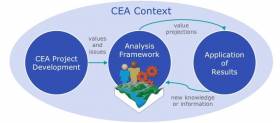Doug Williams, Jason Smith, Jim Hackett, and Mike Buell attended the three day Who Will Own the Forest Conference (WWOTF) in Portland, Oregon. The conference is the must attend event for professionals involved in national and international timberland investment including institutional investors, TIMOs, REITS, land managers, forest companies, and consultants.
This was our fifth year attending the conference and we are always amazed at the amount of investment activity in timberlands. Below is a snippet from the WWOTF website: "It is estimated that institutional investors now own more than 25 million acres of U.S. forests, worth more than US$50 billion. Investors are allocating part of their portfolios to forestland as they seek diversification, inflation protection, and potentially higher rates of return than the bond or equity markets."
...


